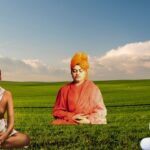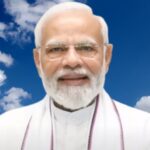On October 2,1869 in Porbandar, Gujarat where Mohandas Karamchand Gandhi was born. He became popularly known as Mahatma. Gandhi was the leader of India’s struggle for independence from British rule and became an inspiration to freedom movements in many countries.
Throughout his life, Gandhi maintained a simple life in accordance withhis Hindu faith. For his anti-non-cooperation efforts, he was arrested several times. The struggle put in by him actualized when India got freedom in 1947. However, Gandhi was assassinated on January 30th, 1948 in Delhi.

Key Takeaways
- Mahatma Gandhi was a key leader fight for freedom with peace, not force.
- Before going back to India, he spent 20 years living in South Africa and standing up for equal rights.
- Significant steps toward freedom were taken by his well-known Salt March in 1930 and the Quit India Movement.
- His teachings on civil resistance and nonviolence have an impact on movements all over the world.
- Despite his efforts to avoid India’s partition, Gandhi was assassinated in 1948. Still, people see him as a symbol of peace today.
Early Life and Education

On 2 October 1869 in Porbandar, Gujarat where Mahatma Gandhi was born. His family had an excellent reputation in the Hindu society. His father was the chief minister of Porbandar, and his mother was influenced by Jainism.
This upbringing gave Gandhi great recognition for non-violence and spiritual discipline.
Gandhi’s education was met with major obstacles at an early age. At 13, he married and lost a year at school. But he did not give up. He passed matriculation in the year 1887 from the University of Bombay.
He moved to Samaldas College in Bhavnagar, Gujarat. There, he had good scores in English but weaker in Geography.
Education in London
He wanted to study law, as was the family tradition. So, he left for London to join the Inner Temple in 1888. English was a hard switch, but he was determined.
Gandhi vowed in London not to drink wine, women, or meat. This went towards self-discipline and moral improvement.
Return to India
After completing law from London, Gandhi returned to India in 1891. He was keen to start a law practice at Bombay but could not get more clients. So, he went to South Africa and spent nearly 20 years there.
Gandhi formulated his philosophy of nonviolent resistance in South Africa. This philosophy would shape the Indian independence movement and inspire civil rights movements worldwide.
Biography of Mahatma Gandhi

On 2 October 1869 in Porbandar, Gujarat, where Mahatma Gandhi was born. His experiences in South Africa shaped his philosophy. His life was a magnificent journey dedicated totruth and nonviolence.
He was a noticeable figure in the battle for freedom from British rule when he returned to India in 1915. Millions of people were inspired by him as he led nonviolent campaigns against British rule.
His first important activity was the historic Salt March in 1930, through which he protested the British Salt Act peacefully. His act brought instant national calls for independence all over the nation.
He has been arrested and fought several times because of his faith. He, however, never surrendered. Global movements have been sparked by his teachings of nonviolence and civil disobedience. He is referred to as the “Father of the Nation.” in India.
Despite the defeats, Gandhi remained devoted to his ideals. He preached social justice, religious tolerance, and helping the poor. His legacy, which symbolizes the power of nonviolent resistance, inspires people worldwide.
| Key Events in Gandhi’s Life | Year |
|---|---|
| Born in Porbandar, India | 1869 |
| Qualified as a barrister in London, returned to India | 1892 |
| Initiated the non-co-operation movement | 1920 |
| Imprisoned for the salt campaign and non-violence | 1930 |
| Agreed to urge Congress to participate in the second Round-table Conference | 1931 |
| Called off the civil disobedience campaign | 1934 |
| Advocated for non-violence during World War II | 1939-1945 |
| Assassinated in Delhi, India | 1948 |
“A country’s moral development and greatness can be assessed by the treatment of its animals.” – Mahatma Gandhi
Transformative Years in South Africa
The period between 1893 and the beginning of the 1910s when Mahatma Gandhi was in South Africa was significant. It shaped his philosophy and approach to social change. He faced firsthand racial discrimination and unfavourable policies.
Experiencing Discrimination
He was a young lawyer who, with a valid ticket, was thrown out of a first-class railway compartment. This marked one of his many experiences under discrimination. It had greatly affected him and motivated his determination to fight the norms.
Development of Satyagraha
Gandhi developed Satyagraha in South Africa. It is a method of passive resistance and civil disobedience. It is founded on truth and non-violence, becoming the heart of his reform approach.
Civil Rights Campaign
Gandhi organized a civil disobedience campaign against discriminatory policies. The campaign lasted eight years. Hundreds of Indians sacrificed their livelihoods and liberty to resist oppressive laws.
This struggle had yielded important concessions. Indian marriages were recognized, and the poll tax for Indians was abolished.
“The measures of the South African government during the struggle, Gandhi’s Satyagraha, would not be tolerated in a civilized country,” stated Lord Hardinge, the Viceroy of India, condemning the actions taken against the Indian community
| Key Events in Gandhi’s South African Years | Year |
|---|---|
| Gandhi’s arrival on a civil suit invitation in South Africa | 1893 |
| Gandhi’s first political campaign in South Africa | 1894 |
| The start of South Africa Satyagraha struggle | 1906 |
| The final phase of the Satyagraha struggle in South Africa | 1913 |
| Gandhi’s return to India after 21 years in South Africa | Early 1910s |
Gandhi’s life changed while he was in South Africa. These principles influenced his ideas on civil disobedience, passive resistance, and satyagraha. These principles guided his leadership during the Indian independence movement.
Gandhi’s life changed while he was in South Africa. These principles influenced his ideas on civil disobedience, passive resistance, and satyagraha.
Political Awakening and Return to India
Mahatma Gandhi eventually joined the Indian National Congress after returning to India in 1915 A.D. He very soon became a key figure in the fight for freedom. He led campaigns for social causes and also toward the goal of Swaraj, or self-rule.
Gandhi’s first big win was the Champaran agitation in Bihar. It was a fight against the British indigo planters exploiting local farmers. This marked the start of his role in the movement, as would turn into the non-cooperation movement afterwards.
This was followed by the Jallianwala Bagh tragedy and protests against the Rowlatt Act. He became the Icon of India’s independence movement in 1920.
He made his movement a mass movement through his non-violent cooperation campaigns.
Gandhi’s re-visitation of India denoted a critical defining moment in the battle for Indian freedom. His peaceful strategies and capacity to join individuals affected India’s excursion towards freedom.
Campaign for Non-Violent Resistance
Mahatma Gandhi was a head of peaceful common noncompliance. He led resistance to British colonial rule in India. His famous Salt March of 1930 was a 387-kilometer march to the Arabian Sea against salt production laws.
This act led to the arrest of nearly 60,000 peaceful protesters.
Salt March and Civil Disobedience

The Dandi March, usually known as the Salt March, was quite possibly the biggest improvement that drove India towards its freedom . In the year 1906, Gandhi started the South African satyagraha, or the process of non-violent resistance. This he brought to India and utilized in many movements, with Champaran Satyagraha in 1917.
Quit India Movement
The Quit India Movement was initiated by Gandhi in 1942. The movement called for an end to British domination. Gandhi and thousands of activists were arrested by the British.
Despite imprisonment, Gandhi and his followers continued to resist through fasting and non-violent actions.
Years in Prison and Protests
Gandhi was arrested many times for his role in the independence movement. His years in prison were filled with resistance and writing, including “The Story of My Experiments with Truth.” Even in prison, Gandhi used fasting to protest and inspire millions of Indians.
| Event | Year | Impact |
|---|---|---|
| Satyagraha in South Africa | 1906 | The idea behind non-violent resistance |
| Champaran Satyagraha | 1917 | India’s first significant Satyagraha campaign |
| Salt March | 1930 | Captur of 60,000 peaceful protesters |
| Quit India Movement | 1942 | Capture of Gandhi and thousands of activists |
“Non-cooperation with evil is as much a duty as is cooperation with good.”
– Mahatma Gandhi
Gandhi’s Principles and Philosophy
Mahatma Gandhi’s philosophy was based on Satya (truth) and Ahimsa (nonviolence). He considered the non-violent approach to combating injustice known as satyagraha. Around the world, this concept has sparked civil rights movements.
Gandhi believed in living simply and being self-reliant. He promoted Khadi (homespun cloth) to help India’s economy. His ideas also covered diet, spirituality, and helping the “untouchables,” whom he called Harijans, or “children of God.”
Gandhiji’s ideas were widely discussed. Many books and studies have explored his life and teachings. Research centers worldwide show the ongoing interest in his philosophy.
At the heart of Gandhian philosophy is Satya, or universal truth. He believed in practical idealism over strict rules. His main belief was Sarvodaya, the well-being of all, without exception.
| Key Principles of Gandhian Philosophy | Significance |
|---|---|
| Ahimsa (Nonviolence) | The fundamental principle of Gandhi’s approach towards social and political change. |
| Satyagraha (Truth-Force) | Nonviolent form of resistance to injustice, which Gandhi developed and used in his campaigns. |
| Decentralization | Political and economic decentralization, Gandhi supported cooperation rather than competition. |
| Dignity of Labor | He strongly believed in the importance of manual work and dignity in every type of labor. |
| Trusteeship | This concept about property ownership was brought to the fore by Gandhi to encourage capitalists and industrialists to be trustees of wealth over people. |
Gandhi’s ideas have deeply influenced leaders and movements worldwide. Martin Luther King Jr. and Nelson Mandela were inspired by Gandhi, and his philosophy still guides one who aspires to lead towards a fairer world.
“The greatness of humanity is not in being human, but in being humane.”
– Mahatma Gandhi
Role in India’s Independence Struggle
India’s battle for independence from British, Mahatma Gandhi was the key figure. With passion, he led the Indian National Congress. Gandhi utilized converses with the British and civil disobedience to win India’s freedom.
Congress Party Leadership
Numerous Indians were motivated by Gandhi’s initiative and peaceful strategies. Between 1919 and 1922, he led a boycott of British institutions. He defied the British salt monopoly in 1930 by marching 241 miles to Dandi.
This march led to over 60,000 arrests, including Gandhi’s. His actions showed the power of nonviolent resistance.
Negotiations with British
Gandhi continued fighting for talks with the British; even after being jailed many times, It was in 1931 when he made the Gandhi-Irwin Pact and this pact allowed him to join the Round Table Conference in London.
Though the conference failed, but Gandhi’s commitment to peace and unparalleled ability to gather all of India’s support brought India its freedom in 1947.
Path to Freedom
In 1942, Gandhi initiated the Quit India movement. It was brutally repressed but marked a turning point. The Mountbatten Plan in 1947 announced India free on August fifteenth, 1947.
Non-violent methods and leadership were crucial for India’s freedom. His legacy inspires people all around the World.
| Event | Year | Significance |
|---|---|---|
| Non-cooperation campaign | 1919-1922 | Gandhi directed the nationwide campaign of civil disobedience against British rule. |
| Salt Satyagraha | 1930 | Gandhi’s iconic march to the coastal town of Dandi, defying the British salt monopoly, became a pivotal moment in the independence struggle. |
| Quit India movement | 1942 | Gandhi’s call for the British to “Quit India” further galvanized the nation’s resolve for self-rule, despite brutal suppression by the British authorities. |
| Indian independence | 1947 | After decades of tireless efforts and negotiations, India finally achieved independence from British rule. |
“Non-violence is the greatest force at the disposal of mankind. It is mightier than the mightiest weapon of destruction devised by the ingenuity of man.” – Mahatma Gandhi
Personal Life and Spiritual Journey
Throughout his life, Mahatma Gandhi exhibited strong commitment to self-affection, truth and non-violence. His spiritual evolution and aspects of his personal life tell us much about the human behind the legend.
At 13, Gandhi married Kasturbai Gandhi. Over time, Kasturbai became a strong supporter of his political work. Gandhi’s spiritual journey included trying different diets, fasting, and brahmacharya (celibacy). He believed these practices were key to changing himself and society.
Gandhi’s autobiography, “The Story of My Experiments with Truth,” offers a real look at his growth. Gandhi was influenced by many religious traditions earlier in his life, such as Hinduism and Jainism, having fuller relationships with them. His central ideology, namely, Satyagraha, brought revolutionary mighty to the struggle for India’s freedom.
“I have nothing new to teach the world. Truth and non-violence are as old as the hills.” – Mahatma Gandhi
Gandhi’s commitment to non-violence, simplicity, and self-discipline was personal. His journey of brahmacharya and truth was a big part of his search for spiritual enlightenment and peace.
Mahatma Gandhi showed us the power of personal change and its impact on society. His legacy inspires millions worldwide. It reminds us of the great change we can make by living a life of truth, non-violence, and the pursuit of justice.
Impact on Global Civil Rights Movement
Mahatma Gandhi’s way of thinking of peaceful obstruction has profoundly impacted social equality developments around the world. His idea of Satyagraha has inspired numerous activists and leaders. They fight for justice and equality utilizing his techniques.
International Influence
Gandhi’s impact went beyond India. Leaders like Martin Luther Lord Jr. in the U.S. also, Nelson Mandela in South Africa were affected by him. The civil rights movement in the U.S. also, the counter politically-sanctioned racial segregation development in South Africa were formed by Gandhi’s thoughts.
Legacy of Non-violence
Gandhi’s focus on peacefulness and moral influence is as yet felt today. His heritage has contacted many battles, from LGBTQ+ rights to natural conservation. The practice of Satyagraha has become a universal tool for social change.
“Darkness cannot drive out darkness; only light can do that. Hate cannot drive out hate; only love can do that.”
– Martin Luther King Jr., inspired by Gandhi’s teachings
Gandhi’s legacy continues to inspire those seeking a more just world. His ideas and methods are a guiding light for many. His impact on the global civil rights movement will last for generations.
Partition of India and Gandhi’s Role
Mahatma Gandhi, the head of India’s fight for freedom, opposed the country’s partition. Yet, as pressures among Hindus and Muslims developed,Gandhi agreed to the partition hoping for peace. He worked hard to bring people together during the violence that followed in 1947.
Partition led to millions being displaced and thousands dying. Gandhi was heartbroken in his last months. He went on fasts and marches to stop riots in places like Calcutta and Delhi. His efforts in Calcutta quickly reduced tensions, and his fast there led to a promise of peace.
The Segment caused perhaps of the greatest relocation ever. Hindus and Sikhs from West Punjab and Muslims from East Punjab needed to leave. Gandhi tried to stop violence in Delhi by setting up camps for refugees. He helped both Hindus and Sikhs from West Pakistan and Muslims from Delhi.
“The Partition of 1947 caused more displacement and demographic transformation in major cities of South Asia compared to the Holocaust in Europe during World War II.”
Despite Gandhi’s efforts, the Partition was devastating. It deeply saddened him in his final months. His death on January 30, 1948, was a tragic end to his life of fighting for unity and non-violence.
| Key Figures | Accepting Partition |
|---|---|
| Nehru, Patel | Majority of Congress leaders |
Final Days and Assassination
Last Peace Efforts
In his final days, Mahatma Gandhi was committed to peace and unity between Hindus and Muslims. Despite the rising tensions and political chaos, he worked hard to find a solution. He wanted to ensure the rights and safety of all, no matter their religion.
Tragic End
His life was brought to an end tragically on January 30, 1948. Gandhi was assassinated by Nathuram Godse, a Hindu nationalist. Godse opposed Gandhi’s dream of a secular India and did not accept Gandhi’s talks with the Muslim leaders.
As Gandhi walked to a prayer meeting in Delhi, Godse shot him multiple times. Gandhi was hit in the stomach and chest. Godse then attempted to commit suicide however failed. The world was shocked, and violence broke out in Bombay and different spots.
Gandhi’s funeral service was gone to by more than million individuals. The parade was five miles in length and required five hours. His body was burned on a sandalwood fire, and his remaining parts were lowered in the Jumna and Ganges streams.
Gandhi’s death was a huge loss, However, it also made him a representation of nonviolence and peace. His legacy endures, serving as a constant reminder of his struggle for his convictions.
FAQ
When and where was Mahatma Gandhi born?
Mohandas Karamchand Gandhi was born on October 2, 1869, in Porbandar, Gujarat in India.
What was the role played by Gandhi in the Indian freedom movement?
Gandhi led India’s fight for freedom from British rule. He began the implementation of his principle against violence during the Salt March and Quit India Movement aimed at obtaining freedom for India in 1947.
Explain how Mahatma’s life in South Africa influenced his his philosophy of Satyagraha?
Gandhi was a victim of racial discrimination in South Africa. This situation inspired him to establish Satyagraha or passive resistance It’s a way to protest injustice without violence.
What were Gandhi’s key principles and beliefs?
Gandhi believed in non-violence (Ahimsa) and truth (Satya) equally. Besides, he was an epitome of simple living and self-reliance, exercising respect for labor. He also championed Khadi, a form of handspun cloth, as a measure to uplift India’s economy.
What influence did Gandhi’s personal and spiritual life have on his work?
Gandhi experimented in diet, fasting, and celibacy. His autobiography is a presentation about how all of this shaped him and how powerful it was toward his philosophy and activism.
How did Gandhi’s legacy and teachings influence civil rights movements worldwide?
Gandhi inspired global nonviolent resistance movements. Influence came from big leaders like Martin Luther King, Jr. and Nelson Mandela among others. But Gandhi’s influence on Satyagraha were adopted globally.
How did Gandhi respond to the partition of India?
Gandhi opposed India’s partition but accepted it for peace. He worked to end violence through fasts and marches. His goal was to unite Hindus and Muslims.
How did Mahatma Gandhi’s life come to a tragic end?
Gandhi was assassinated on January 30, 1948, by Nathuram Godse. Godse opposed Gandhi’s vision of a secular India. Gandhi’s funeral was attended by millions, marking the end of an era.







